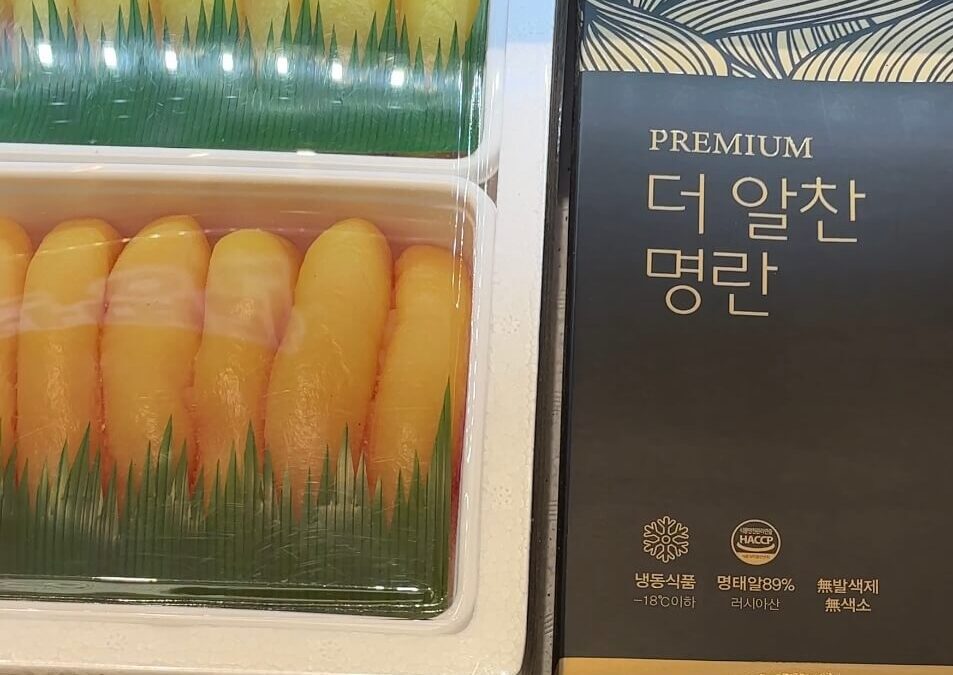Myeongran: Korean Salted Pollock Roe

Myeongran (명란), or salted pollock roe, is a cherished ingredient in Korean cuisine, known for its rich umami flavor and versatility. While it is a staple in Korean households, its history and cultural significance extend beyond Korea, influencing neighboring countries, particularly Japan.
Origins and Cultural Significance in Korea
Myeongran has been a part of Korean culinary traditions for centuries. The roe of the Alaska pollock (Gadus chalcogrammus), known as myeongtae (명태) in Korean, is carefully prepared through a process of salting and fermentation, resulting in myeongran jeot (명란젓), the salted version of the roe. This preparation method enhances its shelf life and intensifies its flavor, making it a valuable food source during the colder months.
Historically, myeongran was considered a delicacy and was often served as a side dish (banchan) accompanying rice and soup. Its rich taste and nutritional value made it a popular choice among Korean families, especially during festive seasons and important gatherings.
The Journey to Japan: The Story of Mentaiko
The introduction of myeongran to Japan is attributed to Toshio Kawahara, a Korean-born Japanese entrepreneur from Busan. In the aftermath of World War II, Kawahara founded Fukuya, the oldest mentaiko company in Japan, in Fukuoka. He adapted the Korean myeongran jeot to suit Japanese palates by incorporating chili peppers, creating a spicier version known as karashi mentaiko (辛子明太子). The name “mentaiko” is derived from the Korean word myeongtae (명태, meaning pollock) and the Japanese word ko (子, meaning child or roe)
The popularity of mentaiko in Japan grew rapidly, especially in the Fukuoka region, where it became a local specialty. Today, mentaiko is a common ingredient in Japanese cuisine, featured in dishes such as onigiri (rice balls), pasta, and as a topping for various foods.
Myeongran in Contemporary Korean Cuisine
In modern Korean cuisine, myeongran continues to be a beloved ingredient. It is commonly used in dishes like gyeran-jjim (steamed egg), bokkeumbap (fried rice), and myeongran jeot pasta, a fusion dish that combines the rich flavors of myeongran with Italian pasta. Despite its traditional roots, myeongran has seamlessly integrated into contemporary culinary practices, reflecting its enduring appeal and adaptability.



